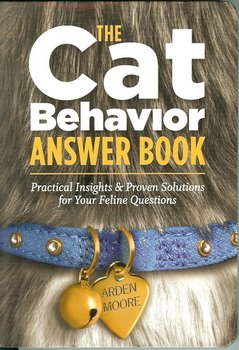It’s National Pet Poison Prevention Week
March 20 – 26, 2016
Pet Poison Prevention
Managing all the steps necessary to keep our pets safe, healthy and happy can keep us on our toes. That’s one of the reasons we need reminders such as National Pet Poison Prevention Week. There are so many dangers for our pets that it’s difficult to keep up with all of them.
In the Garden
For instance, did you know that for a cat exposure to any part of a Lily can lead to kidney failure? Don’t feel badly. More than 70% of cat owners don’t know about all the dangers of lilies. While I was doing research for this blog post I was stunned to learn that even exposure to the water in a vase containing lilies can be lethal for cats.
The Pet Poison Hotline has developed loads of information that we can use. They have developed an awareness campaign, No Lilies for Kitties that provides methods we can use to educate ourselves and each other. I especially like their short videos that highlight the most significant information. I learned that day lilies, tiger lilies and Easter lilies are among the most deadly.
For cats, exposure to any part of the Lily can lead to kidney failure. Although you can start first aid at home, there are no home remedies for the treatment phase. It’s essential that your cat begin treatment by the veterinarian as soon as possible after exposure and in no case more than 18 hours after exposure. Any more time than that and your cat will have an extremely poor prognosis, most likely resulting in the need to euthanize your cat due to acute kidney failure.
Along with the Lily there are other plants in the garden and landscape that are poisonous to dogs or cats or both. Be sure to learn about any plants you already have as well as any new plants you are considering. The ASPCA offers a list of toxic and non-toxic plants for dogs, cats and horses.
If you grow vegetables that are toxic to cats or dogs you may want to put a fence around that part of your garden. We learned this the hard way one year after Beau and Luke took a romp through our garden while we had the soaker hose on. Fortunately, the dogs were not hurt, but we decided to protect our garden from being raided by our pets as well as the deer that live in our woods.
Common vegetables found in the garden that are poisonous include onions, garlic and chives. Although the ripe fruits of the nightshade family are safe for dogs and cats, the plants are not safe. These include tomato and rhubarb leaves and stems and green potatoes and green tomatoes. We even keep the compost bin inside the fenced in area of the garden.
Dangerous ornamental plants include the sago palm, azalea, hibiscus, daffodil, dieffenbachia, geraniums and hydrangeas. Cocoa mulch gives off a chocolate aroma that is attractive to dogs but not safe for them to ingest. Remember that lawn and garden fertilizers, pesticides, and herbicides are poisonous to our pets too. Yet another reason to consider organic gardening.
Around the House
The Pet Poison Hotline offers Preventing-Pet-Poisonings-Infographic (2)that is easy to read and follow. As you walk through your house thinking about pet poison prevention consider these items.
Food: Chocolate, grapes, apple and pear seeds, avocado, onion, garlic, chives, macadamia nuts, caffeine, alcohol, salt, unbaked yeast dough, moldy food and any items containing the artificial ingredient xylitol are poisonous. Even some peanut butter is now sweetened with xylitol so be sure to read the label.
Cleaners: Laundry and dishwasher soap pods are attractive to pets and dangerous. Oven cleaner, fabric softener, bleach and dryer sheets, rust and lime removers, toilet cleaners and ammonia should all be kept out of reach of our pets. Perhaps you are ready to explore making your own cleaners with far safer ingredients including baking soda and white vinegar. But still exercise caution in storage of these items.
Medications: All prescription and over-the-counter medications should be kept out of reach and sight of pets. We all know how curious they can be. It never ceases to amaze me at what kind of containers and doors determined dogs and cats can open. Be particularly vigilant about medications for the heart and acetaminophen. Whether in human or pet dosages these can be deadly.
Decorative Items: The batteries in our remote control devices are poisonous to our pets. We need to be very careful with liquid air fresheners and potpourri. Remember our earlier discussion regarding houseplants too. The most dangerous plants are those in the Lily family. Other house plants including asparagus ferns, corn plant, dieffenbachia, cyclamen, philodendron, jade, aloe and pothos are poisonous.
Miscellaneous Items: Often times you will find these items stored in the garage because we use them in or on our vehicles and garden equipment. These items include anti-freeze, de-icers, windshield cleaners, motor oil, gasoline, kerosene, paint, paint thinner, water softeners and gardening chemicals.
We often hear the old adage, an ounce of prevention is worth a pound of cure. That’s certainly true for pet position prevention. We hope these reminders will keep you and your pets safe as you prepare to enjoy your Spring together.






























Recent Comments